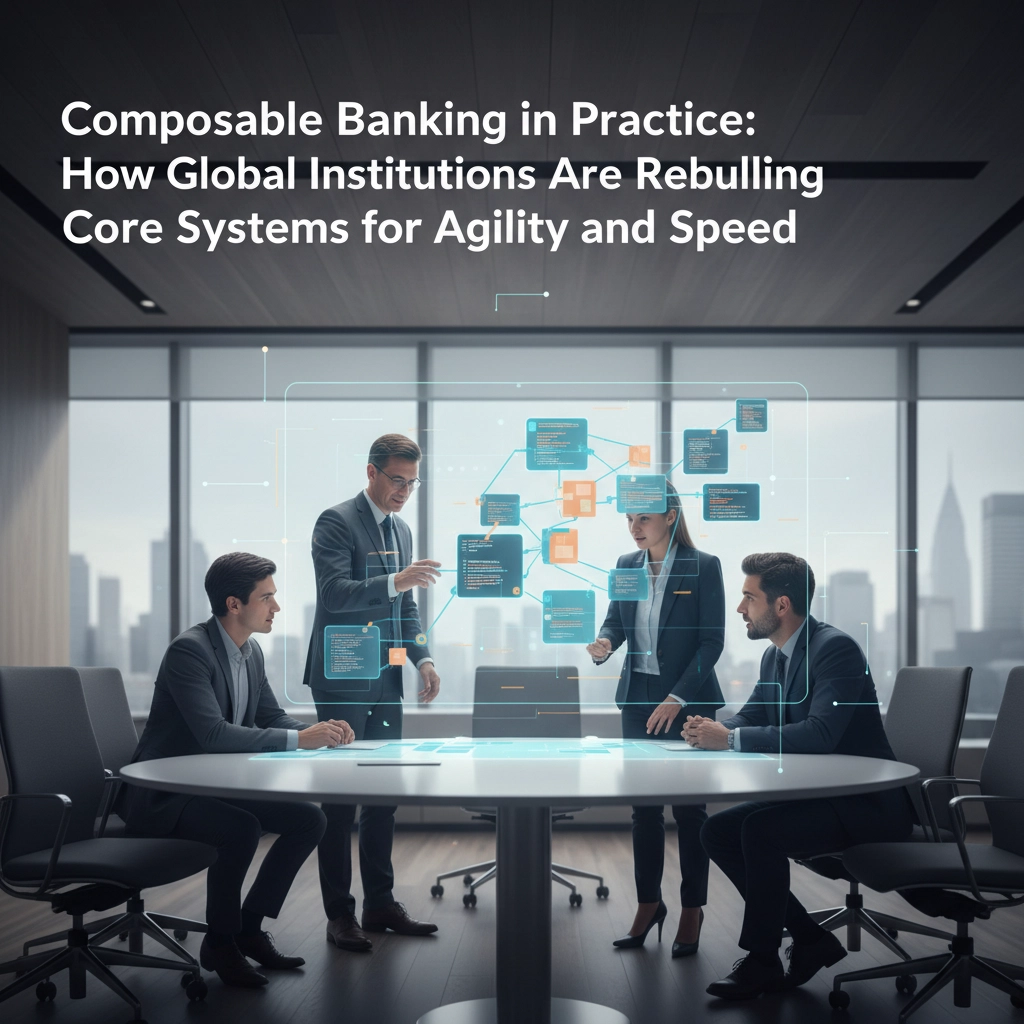Following on from last week’s blog, "Why Scaling Digital Transformation Stalls…", this follow-up dives deeper into the real barriers — and the smart scaling moves that get digital projects unstuck.
By Penny Lane
Digital transformation failure rates remain stubbornly high across enterprises, with 70% of initiatives falling short of their stated objectives. Despite organizations investing nearly $4 trillion globally in digital transformation by 2027, most projects stall, deliver marginal returns, or collapse entirely under the weight of hidden barriers that leadership never anticipated.
The fundamental problem isn't technology: it's the invisible friction points that derail progress long before technical limitations become apparent. Understanding these hidden barriers and implementing proven scaling methodologies separates successful digital transformations from expensive failures.
The Strategy-Execution Disconnect: Where Transformation Dies
The most critical hidden barrier emerges from treating digital transformation as technology deployment rather than comprehensive business reinvention. Organizations frequently focus on implementing impressive tools without addressing the strategic framework needed to support them.
This creates a dangerous gap where teams receive advanced capabilities that don't solve real problems or advance strategic objectives. When different departments pull in different directions due to competing priorities, transformation efforts lose momentum at the first sign of resistance.

Leadership Alignment Failure represents the deepest structural barrier. Without unified executive sponsorship that extends beyond initial approval to include active communication, resource allocation, and continuous decision-making throughout the entire process, initiatives inevitably fragment. Each department interprets transformation goals differently, creating internal competition rather than collaboration.
The IT Department Trap compounds these alignment issues significantly. Organizations tend to view transformation as purely an IT responsibility, leading to quick, costly investments in disparate technologies that make the transformation process more difficult and expensive to execute. This siloed approach ignores the cross-functional nature of genuine digital transformation.
Hidden Organizational Barriers That Kill Progress
Change Management Blindness represents perhaps the most overlooked barrier. Organizations following structured change management strategies are 7x more likely to meet their digital transformation goals, yet most projects begin without any change management framework.
This creates immediate resistance when employees face uncertainty about future roles, workflow changes, or simply encounter the discomfort that accompanies any significant organizational shift. Without systematic change management, even the most technically sound transformation initiatives crumble under human resistance.
Legacy System Anchoring creates invisible friction throughout transformation efforts. Outdated infrastructure consumes IT resources, fragments user experiences, and limits the scalability of new digital tools. Organizations consistently underestimate the complexity of legacy application modernization or retirement, leading to hybrid environments that satisfy no one and optimize nothing.

The Measurement Problem creates a particularly insidious barrier. Traditional metrics like rollout completion percentages or system uptime fail to reflect actual adoption rates, behavioral changes, or long-term productivity gains. Without visibility into meaningful outcomes, leadership loses confidence and project teams lose direction, creating cycles of diminishing returns.
Resource Allocation Miscalculation stems from underestimating the human capital requirements for successful transformation. Organizations often assume existing teams can absorb transformation responsibilities alongside regular duties, leading to overwhelmed staff, delayed timelines, and compromised quality across both transformation and operational activities.
Smart Scaling Secrets: Proven Methodologies That Accelerate Success
Strategic Staff Augmentation emerges as the most effective solution for resource allocation challenges. Rather than overwhelming internal teams, successful organizations supplement existing capabilities with specialized expertise that accelerates progress without disrupting core operations.
Smart staff augmentation focuses on three critical areas:
- Technical expertise gaps that internal teams cannot fill efficiently
- Capacity expansion during peak transformation periods
- Knowledge transfer that builds internal capabilities for long-term sustainability
Leading enterprises recognize that transformation speed directly correlates with access to specialized skills. By strategically augmenting teams with experts who understand both technical implementation and business process optimization, organizations achieve 2x faster project completion rates while maintaining operational stability.

Cross-Functional Excellence Centers replace traditional IT-driven approaches with integrated teams combining developers, stakeholders, business users, and strategic contributors. This methodology addresses the four pillars of digital transformation: People, Portfolio, Process, and Platform.
Excellence centers establish clear governance structures that maintain alignment across organizational levels while providing flexibility for rapid iteration and adjustment. They serve as transformation command centers that coordinate resources, resolve conflicts, and maintain strategic focus throughout complex implementation cycles.
Continuous Enablement Architecture treats transformation as an ongoing capability rather than a discrete project. Smart scaling focuses on embedding enablement, communication, and accountability into every stage of the transformation journey.
This requires establishing clear escalation paths, regular alignment checkpoints, and communication channels that maintain strategic coherence across all organizational levels. Continuous enablement prevents the common pattern where initial enthusiasm gives way to gradual disengagement and eventual project abandonment.
Advanced Scaling Methodologies: Beyond Traditional Approaches
Adaptive Roadmapping Systems tie technology decisions directly to measurable business outcomes. Vague aspirations like "becoming more digital" must be replaced with specific, quantifiable goals coordinated through unified timelines and metrics.
Smart organizations develop roadmaps that bridge strategic business objectives with individual team member workflows. These roadmaps adapt to changing conditions while maintaining strategic direction, ensuring transformation efforts remain relevant and valuable throughout extended implementation periods.

Holistic Problem-Solving Frameworks represent the most sophisticated approach to transformation scaling. Instead of immediately pursuing software solutions, successful organizations examine problems through comprehensive lenses that consider:
- Portfolio integration with existing systems and processes
- User experience impact across all stakeholder groups
- Organizational capability requirements for sustainable adoption
- Platform compatibility with long-term technology strategies
Cultural Integration Strategies balance technological components with the cultural changes needed to support them. This involves systematically addressing resistance through targeted communication, comprehensive training programs, and support systems that help employees understand and embrace business changes.
Cultural integration recognizes that technology adoption rates directly correlate with employee confidence and engagement levels. Organizations that invest in cultural preparation achieve 65% higher adoption rates compared to those focusing exclusively on technical implementation.
Outcome-Focused Measurement Systems replace traditional completion metrics with behavioral and productivity indicators. Smart scaling requires developing visibility into adoption rates, user engagement levels, process efficiency improvements, and long-term ROI metrics that demonstrate actual transformation value.
These measurement systems provide early warning indicators that allow course corrections before problems become critical. They also generate the data needed to justify continued investment and expansion of successful transformation initiatives.
Strategic Legacy Integration: Turning Barriers Into Bridges
Rather than treating legacy systems as obstacles, smart organizations develop comprehensive modernization strategies that use existing infrastructure as transformation foundations. Strategic legacy integration involves creating frameworks that allow new digital tools to work alongside existing systems while gradually reducing dependence on outdated components.
This approach recognizes that immediate legacy system replacement often creates more problems than it solves. Instead, successful organizations develop integration architectures that preserve business continuity while enabling progressive modernization based on strategic priorities and risk assessments.

The key to successful digital transformation lies not in avoiding failure entirely, but in understanding that transformation represents an ongoing organizational capability requiring strategic alignment, cultural adaptation, and continuous enablement rather than a discrete technology project with defined endpoints.
Organizations that master these scaling methodologies position themselves to adapt continuously to changing business environments while building sustainable competitive advantages through superior digital capabilities. The difference between transformation success and failure ultimately depends on recognizing these hidden barriers early and implementing proven scaling strategies that address both technical and organizational challenges systematically.
Smart enterprises understand that digital transformation success requires the right combination of strategic vision, specialized expertise, and systematic execution: capabilities that external partners like Finative help organizations develop and deploy effectively across complex enterprise environments.
Ready to accelerate your digital transformation with bespoke, state-of-the-art solutions? Get in touch: https://finative.dev/contact-us/




Leave a comment: